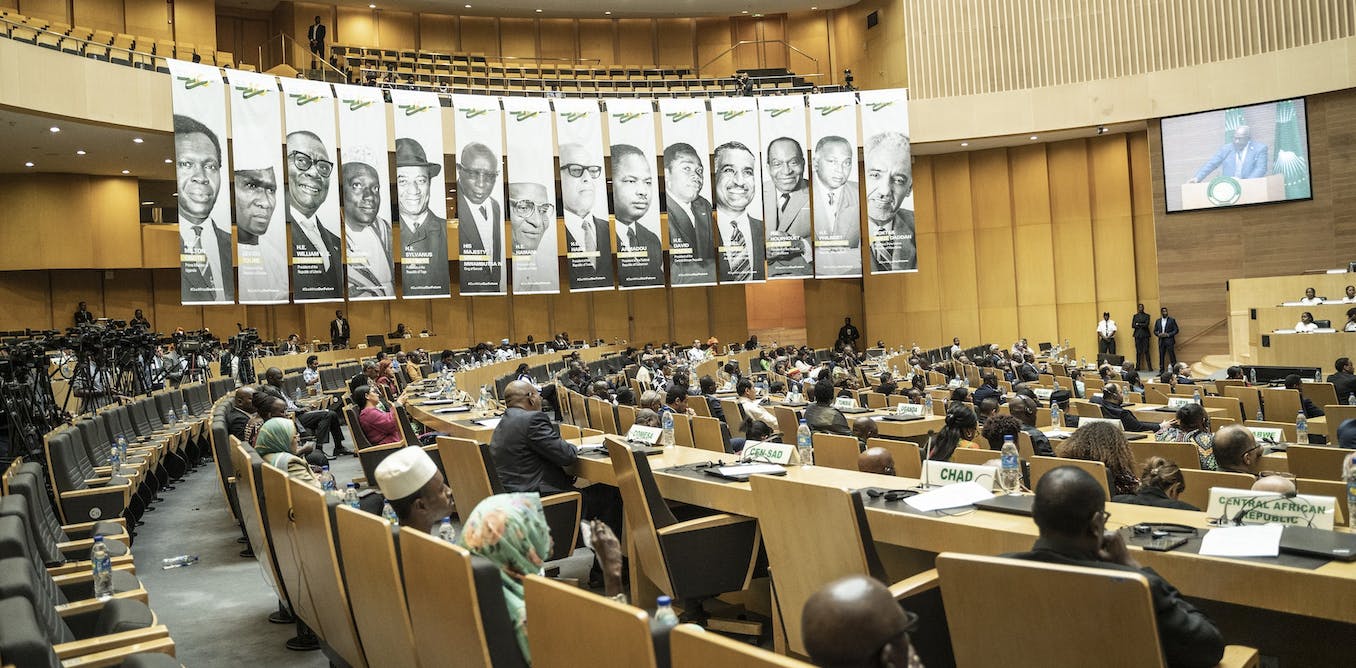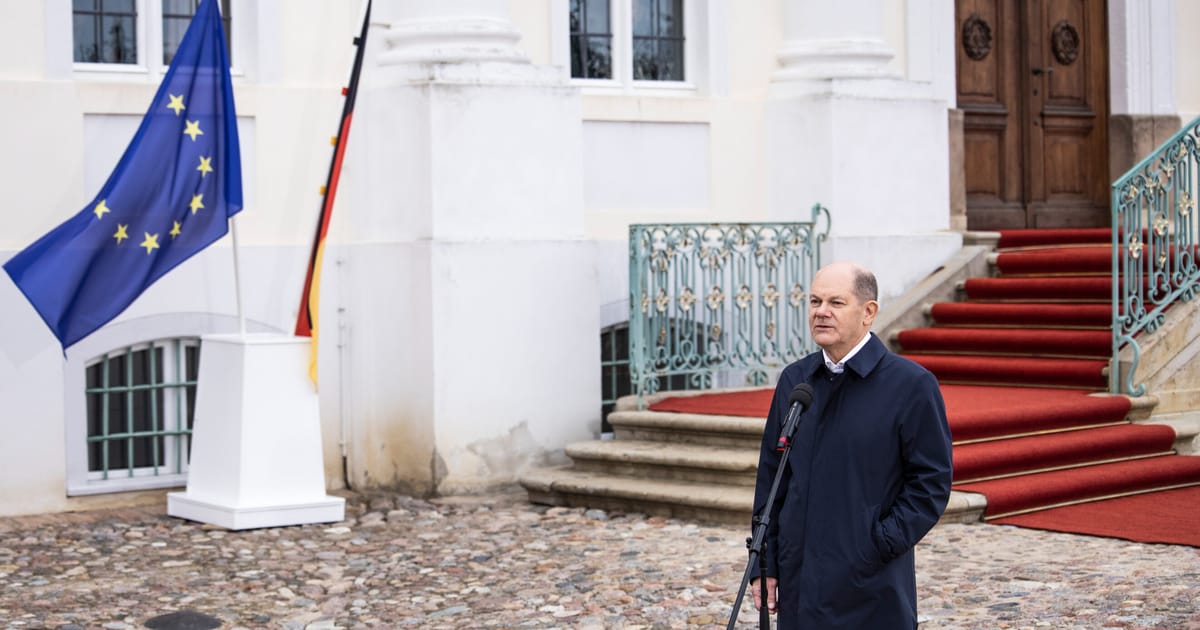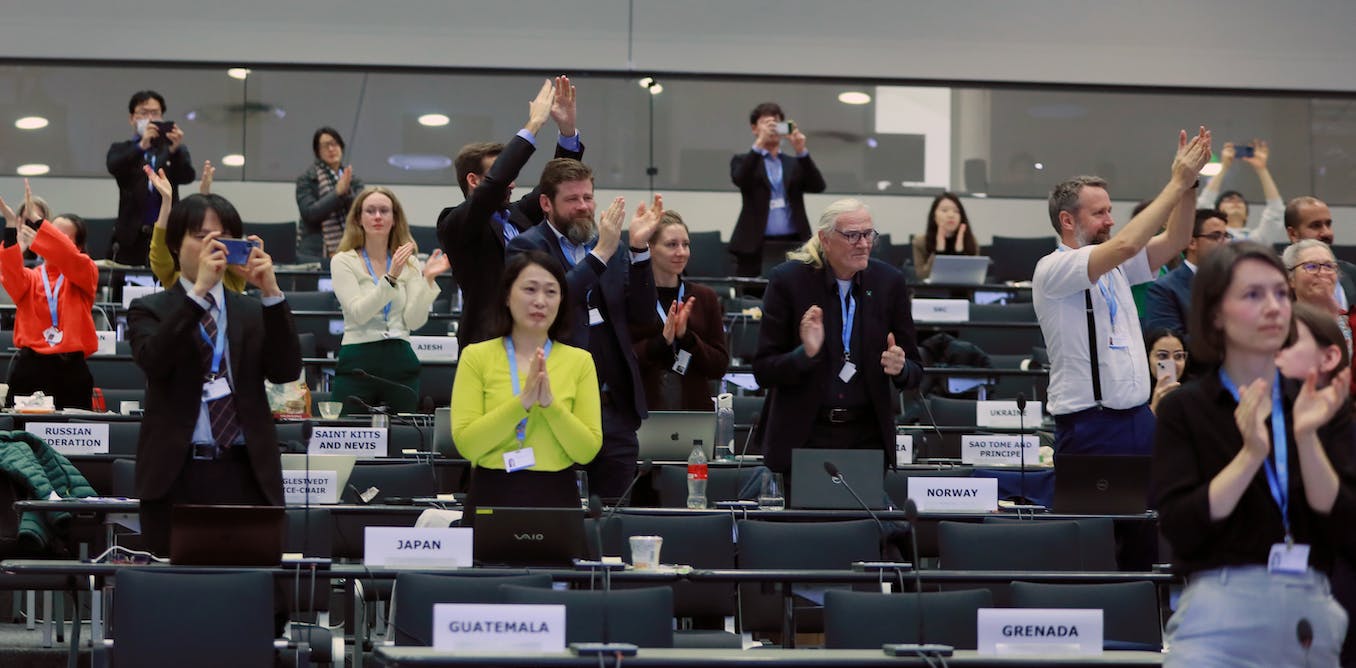Much has been written about the decision by certain African countries to send out a peace mission to Ukraine in May. Reporters, however, failed at the time to pick up on one notable point: that the initiative was not taken within the framework of the African Union (AU). This is yet another illustration of the fact that this organisation is struggling to establish itself on the international stage.
The institution, which replaced the Organisation of African Unity (OAU) in 2002 and brings together the continent’s 55 states, is based on the model of the European Union (EU). Headquartered in Addis Ababa, the capital of Ethiopia, the AU’s main aims are to “promote peace, security and stability on the continent”, and to develop “common policies on trade, defence and external relations”. However, it has been grappling with its financial reliance on international partners for a number of years, which has called its independence into question.
The AU is facing another difficulty relating to its leadership: absorbed by internal and national problems, its successive chairpersons often neglect pan-Africanist initiatives.
The African Union is tasked with representing all the countries of an immense continent. There would be no position more in keeping with its status than putting the fight against global warming – the greatest challenge of our time – at the heart of its policy. Tackling this issue, which particularly affects the African continent, could enable it to position itself at the centre of the international chessboard.
The African Union, a secondary player in international relations
Global players have always taken a great interest in Africa, from the slave trade through colonisation to the present day. Since the end of the Cold War, we have witnessed a “new scramble for Africa”, with the world’s powers expressing a growing interest in the continent. The number of Turkish diplomatic representations has more than tripled in just 20 years, and China is now the leading investor in Africa. Despite all this, Africa’s role on the international stage has not fundamentally changed since the 19th century. In the eyes of the outside world, the African continent remains largely a passive subject, a mere supplier of raw materials.
[More than 85,000 readers look to The Conversation France’s newsletter for expert insights into the world’s most pressing issues. Sign up now]
Yet in the 21st century, some claim that Africa is the future of the world. Large-scale conferences and summits are being organised by the United States, China, the EU, Russia, Turkey, Japan and many others. But let there be no mistake: this attention is mainly focused on certain African countries that are useful for their strategic resources or their particular geographical location. The AU, as an organisation, often takes a back seat.
For example, at three recent high-profile conferences – the Forum on China-Africa Cooperation in November 2021, the African Union-European Union Summit in February 2022 and the US-Africa Leaders Summit in December 2022 – the vast majority of African personalities invited represented states, while the AU was represented only by its chairperson and/or the chairperson of its commission.
In a recent publication, we pointed out that this configuration observed at forums that present themselves as platforms for dialogue between two entities demonstrates unambiguously that, today, the AU’s voice counts for no more than that of an African head of state.
The divisions within the intergovernmental organisation, which is often perceived as a union of heads of state, reduce the scope of its decisions and prevent the emergence of a common pan-African voice.
Reforming the African Union and identifying its key objectives
To mobilise the resources it needs to function and regain the status it should have on the world stage, the AU urgently needs to propose priorities for action that are likely to massively attract external partners as well as member states.
In this respect, two documents dating from several years ago, whose recommendations have been insufficiently implemented, contain some interesting ideas. They are the 2017 “Report on the Implementation of the Decision on the Institutional Reform of the African Union”, drafted under the supervision of Rwandan President Paul Kagamé, then Chairperson of the AU, and aimed at turning around the AU as a whole, its modus operandi and its finances, and the “Agenda 2063: the Africa We Want”, published on 31 January 2015, aiming to make Africa a major and essential player on the international scene, through 20 fundamental objectives. Objective 7 seems the most likely to generate the massive global support that the pan-African institution really needs.
It reads as follows: “Economies and communities are environmentally sustainable and climate resilient”. To achieve this, the Agenda recommends insisting in particular on the sustainable management of natural resources and the conservation of biodiversity, developing sustainable consumption and production patterns, improving the security of water supplies and resilience to climate change, and working on prevention and preparedness in the face of natural disasters.
As global warming is a threat to the entire human race, and particularly to Africans, this objective is naturally the one on which the AU should focus its efforts.
Great Green Wall and Congo Basin as continental priorities
The Great Green Wall for the Sahara and Sahel (GGW) has the vision to “sow the seeds of prosperity, peace and stability in the dry zones of Africa” by combating climate change. A key part of the GGW initiative is planting trees and restoring degraded land in a dozen Sahelian countries, from Mauritania to Djibouti.
The Congo Basin, on the other hand, directly covers six Central African countries and is reputed to be home to around 10% of the world’s biodiversity and to tropical rainforests and peatlands that absorb huge quantities of greenhouse gases.
Literature from the Congo Basin offers ways to address the climate crisis
Both are major areas for climate action for the AU, Africa and the world. We recently suggested stepping up climate communication and public diplomacy on the Congo Basin.
Bodies such as the Congo Basin Blue Fund, the Congo Basin Forest Partnership (CBFP), the Central African Forest Commission (COMIFAC), and the PAFC Congo Basin Initiative (CBI) are, from this point of view, large-scale environmental initiatives that have already prompted the AU’s main partners to commit themselves wholeheartedly.
Climate action and the African Union
In light of the above, we believe that climate action and diplomacy, particularly through the GGW initiative and the Congo Basin, could help the AU to restore its international image.
The GGW covers an area of 8,000 kilometres across the continent, where the fight against armed violence and extreme poverty are daily challenges. By restoring the productivity and vitality of the Sahel region, the GGW would make it possible to achieve two thirds of the United Nations’ Sustainable Development Goals (SDG), although it is difficult to estimate how long it will take for the region’s populations to enjoy the benefits of this vegetation structure.
The fact that the AU has not included the GGW among its flagship projects could mean that the organisation has not yet grasped the enormous potential that such an initiative can generate in terms of financial and political resources. Through climate action alone, the GGW could considerably reduce climate migration and illegal immigration from Africa, on the one hand, by increasing the number of jobs in the various beneficiary countries and trade between these countries, and, on the other hand, by raising the level of food and human security.
In short, as we have demonstrated, if the GGM is successfully implemented, it can gradually alleviate, or even resolve, a number of problems that concern not only Africa but also the West. Should it achieve the desired results, it will serve as an example for the restoration of certain desert areas on other continents.
Grande muraille verte au Sahel : les défis de la prochaine décennie
Climate action backed by the Congo Basin could yet add more weight to the AU’s diplomacy. Unfortunately, the Congo Basin is not one of the AU’s flagship projects either. The continental institution has been almost invisible in climate negotiations such as the One Forest Summit held in Gabon in March 2023 and is nowhere to be found in the Libreville Plan adopted at the summit. The time has come to wake up.
It is essential that the African Union plays a central role in climate diplomacy. To this end, we recommend that it immediately include the GGW and the Congo Basin among its priorities and flagship projects, for example by appointing special ambassadors responsible for these two initiatives. The GGW, on the one hand, and the Congo Basin, on the other, are valuable opportunities for which the AU must be the standard-bearer across the globe.
Better management of climate change and reduced food insecurity could have a significant impact on extreme violence in the Sahel and on illegal immigration, among other things. The industrialised countries will be among the first beneficiaries of successful action on the GGW and the Congo Basin. The AU could also boost regional trade and integration between some of the 11 GGW target countries and the six Congo Basin countries, thereby further strengthening its international position.




